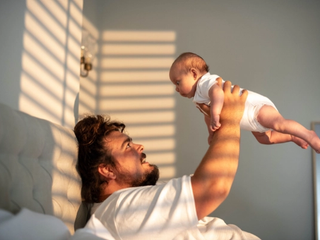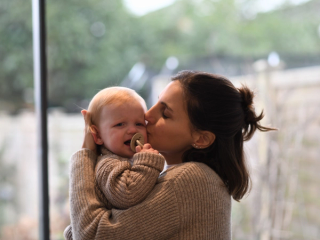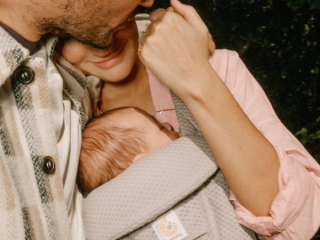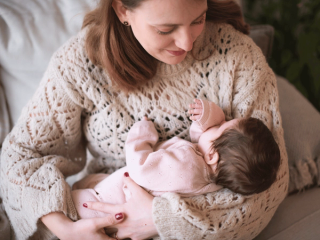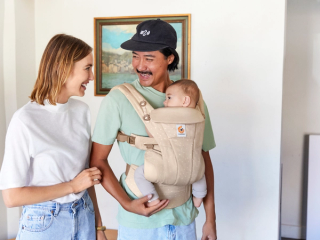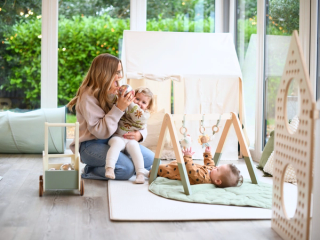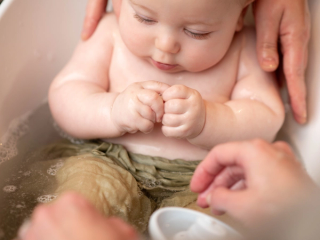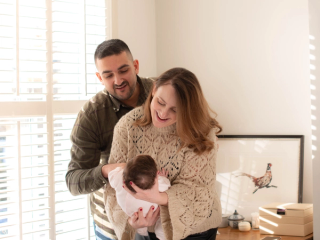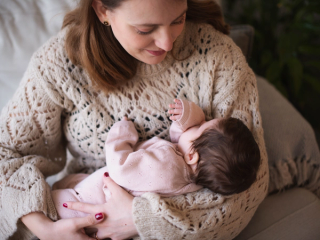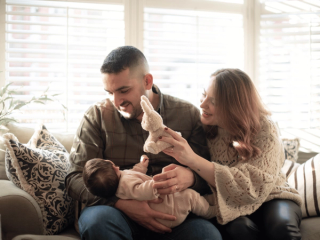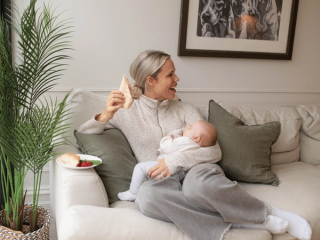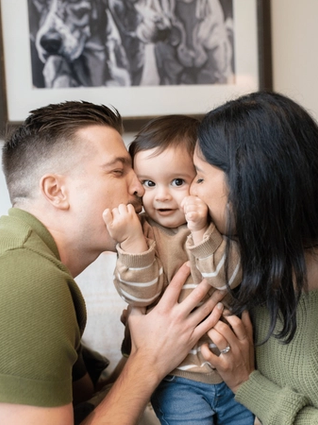
- Home
- Advice Hub
- Newborn
- New Parent Support
- Understanding Your Attachment Style
Understanding your attachment style and how this can affect parenting
What was life like for you as a child? What was your relationship like with your parents? Were your parents available to you or were they too busy, absent or simply distracted managing their own difficulties?
What is attachment?
How does secure attachment develop?
What is insecure attachment?
How would I know if my child has an insecure attachment style?
My child cries when I drop them at the childminders – have they got an anxious attachment style?
I didn’t have a great childhood. How can I improve the bond with my child?
What was life like for you as a child? What was your relationship like with your parents? Were your parents available to you, or were they too busy, absent, or simply distracted managing their own difficulties?
When we go about our adult lives, our own childhood may seem a long time ago. However, becoming parents can be an emotionally intense time that can bring our own experience of being parented back to life. For many this can be a positive experience where they can feel grateful towards their parents, finally appreciating how hard it is to bring up a child! For others, however, parenting can stir up difficult feelings about their own childhood, and it can feel hard to bond with your own child if you never had the chance to develop strong bonds with your parents.
What is attachment?
Psychologists and psychotherapists use the term ‘attachment’ when referring to these parent-child bonds that start developing from within the womb and continue to grow throughout childhood, passing through different stages. Attachment Theory was developed by John Bowlby in the 1950s through observations of parent-child interactions. From an evolutionary perspective, a baby cannot survive without a primary caregiver, typically a mother, to feed and nurture them. Hence, the baby desperately needs to build an attachment with the mother to survive in the world. Attachment allows us to experience emotional connection, and to understand the importance of a relationship with another, but without a secure attachment the world can feel terrifying. Your survival feels at risk.
How does secure attachment develop?
In an ideal world, a secure attachment develops by the primary caregiver being physically and emotionally available, responsive and engaging with the baby. So, for instance, baby knows that when they cry, their parent is there, that they will respond to their cries and that they will engage with the baby by picking them up and soothing them. Such behaviour, including the cooing, soft voice of the parent, known as ‘motherese’, has a positive impact on the baby, and they respond back to the parent with gurgles, smiles and eye contact. This reciprocal cycle helps cement a secure attachment, which can continue to strengthen throughout childhood, and allows that individual to build good relationships with others in the future.
When you have a more secure attachment style as a parent, it means that you’re more likely to be able to bond with your baby, and provide them with a secure attachment in turn. You may feel more able to contain their emotions and to not feel overwhelmed by their needs. A secure attachment isn’t about a parent needing to be with the child the whole time, however. Instead a secure attachment helps a parent to support their toddler manage some distance from them - for instance when they go off to nursery, or run off to play on the climbing frame – because they feel safe in the knowledge that their parent will be there as a safe base for them on their return.
What is insecure attachment?
This secure attachment isn’t always possible, however. If the primary caregiver is unreliable, inconsistent or absent, then the child may feel that their emotional needs are not always met and they can develop an insecure attachment style. This means that the child may exhibit certain behaviours to cope with the lack of emotional security from their parent, which can have a lasting effect into adulthood and impact their future relationships with others.
Insecure attachment can typically be classified in two different directions: anxious or avoidant. Underlying both types of insecure attachment is tremendous fear about the quality of the relationship with the parent and desperately wanting to find a route to feeling safer. Remember, attachment is about survival.
An anxious attachment style can develop if the child isn’t sure about how reliable a parent’s attention towards them will be, which can result in clingy behaviour, where the child fears that they may be forgotten about unless they demand their engagement. An avoidant attachment style on the other hand can develop when a child has learned that the parent is consistently emotionally unavailable, so it’s safer to keep a distance and remain independent in order to preserve what little attachment there is. Some children develop a mix of both anxious and avoidant behaviours, known as disorganised attachment.
If an adult has an insecure attachment style developed from their own childhood, then becoming a parent can present its own challenges. An adult with an anxious attachment style may become very enmeshed with their child, overwhelmed with worry, or find it difficult to leave their child even for short periods. An avoidant attachment style on the other hand may leave a parent feeling smothered by the needs of a young child, unable to ask for help, and may find it hard to know how to respond to their child with the warmth and closeness required.
How would I know if my child has an insecure attachment style?
The fact that you are worrying or thinking about this is probably a protective factor, as it indicates you are emotionally tuned into your child and thinking about their wellbeing. Attachment difficulties emerge as a pattern of behaviour over time, however, and cannot be diagnosed without professional input, so you may want to consider seeking further support from your GP or a family therapist if you notice these behaviours happening consistently:
- Rejecting your attempts to soothe them
- Appearing frightened of primary caregivers
- Being passive or non-responsive to a carer
- Becoming extremely distressed if left for a very short time
- Not being interested in toys or exploring their environment
My child cries when I drop them at the childminders – have they got an anxious attachment style?
Don’t worry! It’s very normal for all children aged 6-24 months to cry at drop off because they wish to stay close to their primary caregiver. Securely attached children are normally able to be soothed and will be pleased to see their parent again at collection time.
I didn’t have a great childhood. How can I improve the bond with my child?
Attachment difficulties can happen to anyone and it’s nothing to be ashamed of. We don’t get to choose our childhood and it’s not your fault if you haven’t always felt secure in your relationships. Similarly, even adults who had happy, secure childhoods may struggle with grief, mental health difficulties or work-related absences during parenthood and may find it hard at times to be emotionally available for their child. Try not to beat yourself up about it. The most important thing is recognising potential difficulties early on and making efforts to improve that bond, as it’s never too late to make changes. Here are a few ways that you can do this:
- Playing, singing and talking to your baby
- Skin-to-skin contact
- Rocking, cuddling and holding them
- Lots of face-to-face attention and eye contact
- Baby massage
- Using a soft, warm tone of voice
- Friendly, open body language
Whatever your circumstances, having an understanding of attachment patterns can be a fascinating way to understand both parent-child and adult relationships, and trying to provide a secure attachment with your child is a life-long gift to them.
If you have any worries about this, please do seek the help of a qualified therapist, your GP, or a charity such as NSPCC , or Action for Children.
Elinor x
Advice & tips

Want to read more? Join the HiPP BabyClub for full access to this article.
As a BabyClub member, you'll get access to a range of exclusive benefits, including:
Monthly competitions
Discounts from our Partners
Expert advice tailored to your little one's age
Weaning recipes
HiPP shop discounts*
*10% off HiPP's online shop does not apply to our First Infant, Anti-Reflux or Comfort Formula Milk.
Important notice: Breastfeeding is best. Follow on milk should only be used as part of a mixed diet from 6 months. Talk to a healthcare professional.




